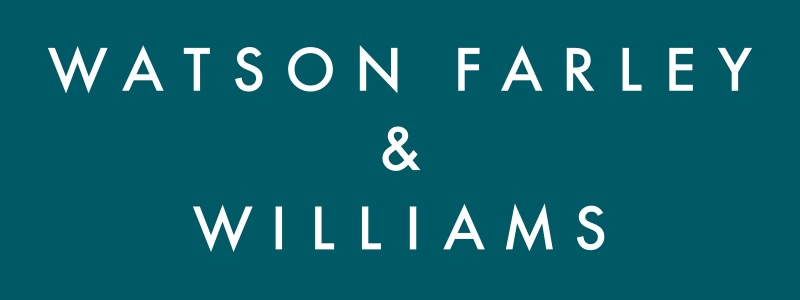Valentina Keys, Senior Associate London at international law firm Watson Farley & Williams
Posted on: 17 January 2023
In the race to charter ships with the highest carbon performance rating, the new CII requirements will impact not only ship owners and charterers, forcing them to rethink their contracts, business priorities and chartering practices, but also, albeit indirectly, their customers and financiers. The new International Maritime Organisation’s (“IMO’s”) Carbon Intensity Indicator (“CII”) certification regime will apply from 1 January 2023 and will capture a wide range of ship types above 5,000 GT. In this article we summarise the CII framework, explain where this fits in the wider IMO decarbonisation agenda and ask whether CII can really work and survive in its current form.
Background
The CII certification regime is one of the two new decarbonisation measures agreed at the IMO’s 76th Marine Environment Protection Committee (“MEPC76”) in July 2021. The second key measure is the Energy Efficiency Existing Ship Index (“EEXI”) which will also apply from 1 January 2023 and which is focussed on the design parameters and one-time certification requirements for new and existing ships above 400GT. Compliance with EEXI is to be achieved via the International Energy Efficiency Certificate and can be met through the fitting of EPLs (engine power limiters) or SHAPOLI (shaft power limitation) in time for January 2023. Both new regimes require the parties to work together to achieve compliance mainly through increased collaboration and sharing of quality data.
What is CII?
The CII certification regime forms part of the amendments made under the International Convention for the Prevention of Pollution from Ships (“MARPOL”) Annex VI which came into force on 1 November 2022 (the “Regulations”)¹. From 2024, ships will receive their first CII Rating ranging from A to E (with A being the highest and E being the lowest) based on their emissions from 2023. The IMO intention is for the rating thresholds for emissions to become increasingly more stringent towards 2030 in order for the 40%/2030 IMO emission reduction target to be reached. Furthermore, the A to E ratings under CII will be recorded in the ship’s Ship Energy Efficiency Management Plan (the “SEEMP”). It is noteworthy that the Regulations² contain specific wording which encourages (but does not oblige) administrators, port authorities and other stakeholders to provide incentives to ships with a CII rating of A or B. It remains to be seen however what incentives will start to emerge and at what scale.
What is the CII rating?
The Regulations determine the annual reduction factor needed to ensure continuous improvement of the ship’s operational carbon intensity within a specific rating level (i.e. the carbon emissions per unit of ‘transport work’ or the operating mileage in a given year).³ Ships covered by CII will be given an annual carbon intensity rating indicating their performance over the previous year. The ship’s carbon intensity is measured against annual milage (the “Attained Annual Operational CII”) and then compared to the required operational carbon intensity that the ship must achieve under the Regulations (the “Required Annual Operational CII”). It is intended that incremental improvements will be made annually.
How is CII calculated?
The CII is an operational efficiency indicator of a vessel that will have to be assessed and calculated on an annual rather than per voyage basis. It is based on a ship’s reported Annual Emissions Ratio (“AER”) which is the annual fuel consumption multiplied by the IMO-set CO2 emissions factor, divided by the distance sailed by the vessel (in ballast and laden condition) and multiplied by the deadweight tonnage (“DWT”) capacity (as opposed to actual cargo carried). The CII calculation has received considerable criticism from the maritime industry due to its failure to address some of the practical commercial realities that vessels encounter during operational stage such as the inability to always go slower; contractual limitations connected with rerouting; logistical and geopolitical limitations of sourcing compliant and/or low carbon fuel; the poor performance consequences of unforeseen bad weather, off-hire periods and port delays; as well as the limitations and artificiality of not including actual cargo carried data in the calculation. (For the time being, using actual cargo carried instead of capacity can only be reported on a voluntary basis and not for the purposes of the CII rating.) The existing formula appears to perversely reward ships that ballast around releasing emissions, by giving them a higher rating and penalises ships that face long stays/delays in port, by giving them a lower rating. For these and other reasons the CII calculation will likely go through numerous iterations before a workable, balanced, and fair formula can be agreed.
Who is the polluter and who will pay?
There are numerous measures that ships can take to improve their CII rating⁴. However, the Regulations are silent on who would take responsibility for the implementation of such measures and, more importantly, who would pay for them. The language of the Regulations focusses on the ‘ship’ having to meet the CII rating requirements as well as those for SEEMP. What this implies is that the polluter, in the eyes of the IMO (similar to the proposed EU Emissions Trading Scheme for Maritime – see our article here) is intended to capture a wide group of actors, and deliberately so, with a view to creating a shared responsibility between the ship owners, ship managers, the charterer and/or commercial operators. In practice however the responsibility for compliance with CII will fall primarily on the ship owners unless that responsibility can to a certain degree be assumed contractually by the charterers. To address this, Bimco recently published their CII Operations Clause for Time Charter Parties (the “Clause”)⁵, which assigns some of the responsibility for CII on the charterers. However, this will be explored further in our second article here.
Who is the polluter and who will pay?
There are numerous measures that ships can take to improve their CII rating⁴. However, the Regulations are silent on who would take responsibility for the implementation of such measures and, more importantly, who would pay for them. The language of the Regulations focusses on the ‘ship’ having to meet the CII rating requirements as well as those for SEEMP. What this implies is that the polluter, in the eyes of the IMO (similar to the proposed EU Emissions Trading Scheme for Maritime – see our article here) is intended to capture a wide group of actors, and deliberately so, with a view to creating a shared responsibility between the ship owners, ship managers, the charterer and/or commercial operators. In practice however the responsibility for compliance with CII will fall primarily on the ship owners unless that responsibility can to a certain degree be assumed contractually by the charterers. To address this, Bimco recently published their CII Operations Clause for Time Charter Parties (the “Clause”)⁵, which assigns some of the responsibility for CII on the charterers. However, this will be explored further in our second article here.
Conclusions and recommendations
It remains to be seen how and if the CII conundrum can be resolved. Given that there is unlikely to be an abundance of highly performing, C or above rated vessels, most owners will be chartering borderline or poorly performing vessels and looking for solutions and contractual mechanisms that control and improve the operational efficiency of the same. With this in mind, we would strongly advise both parties to work together to agree commercially workable ways forward and preferably bespoke CII clauses that meet their specific needs and requirements. There is perhaps one consoling fact in all this, namely, that everyone will be ‘in the same boat’, rowing through the same fog that is CII, until such time that it is reviewed and hopefully reformed come 2026.
Continue to read the full article here.
You may also find interested to read the “Bimco CII Clause finally released: does it make any sense of CII?” article by the same author here.




